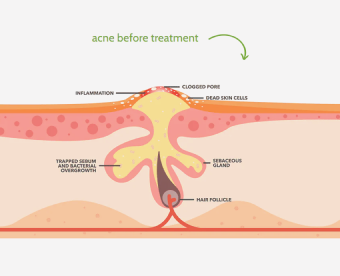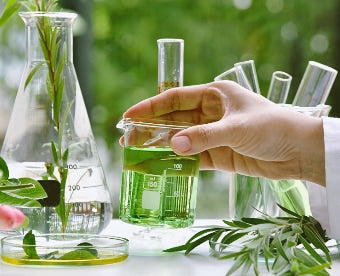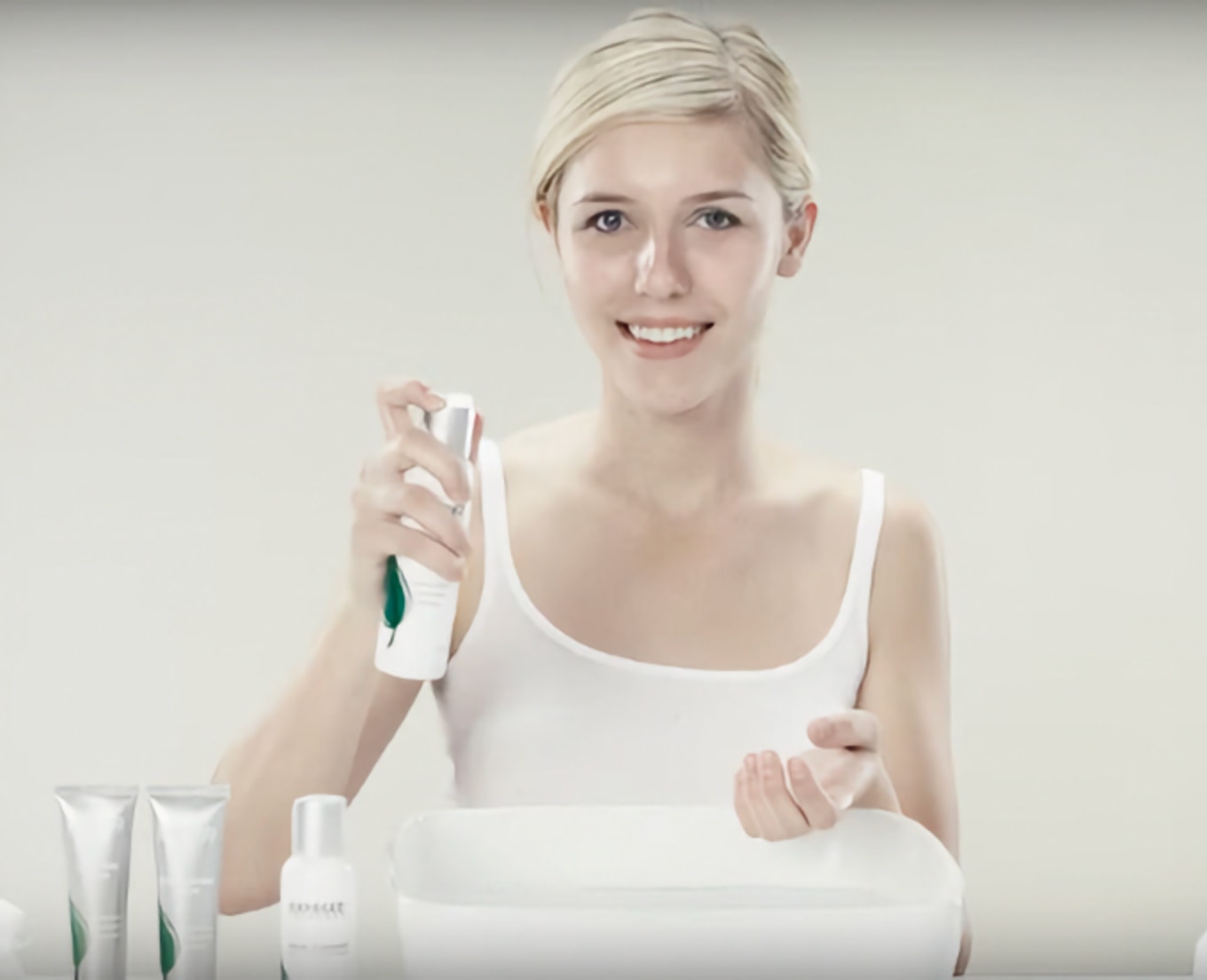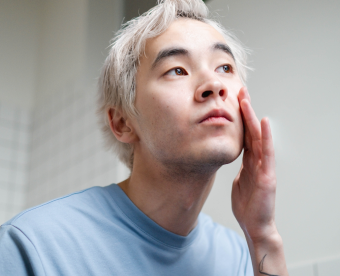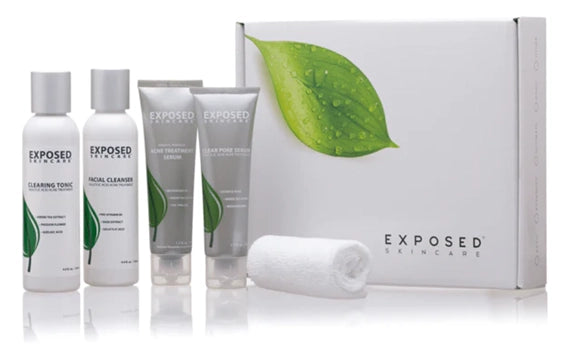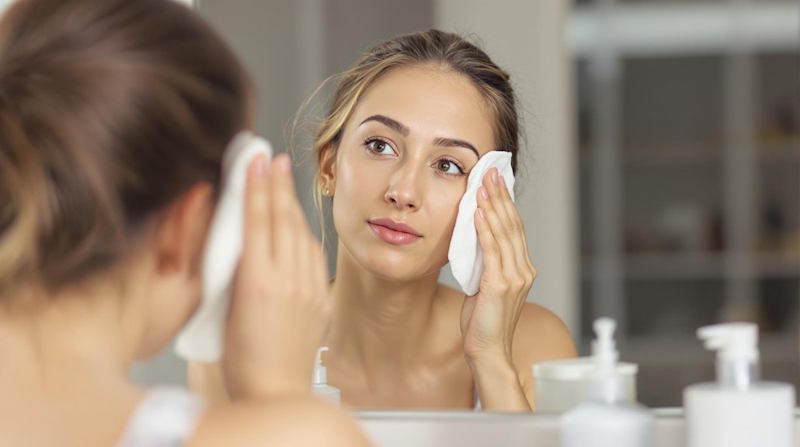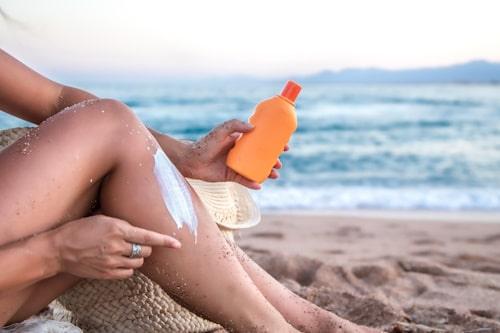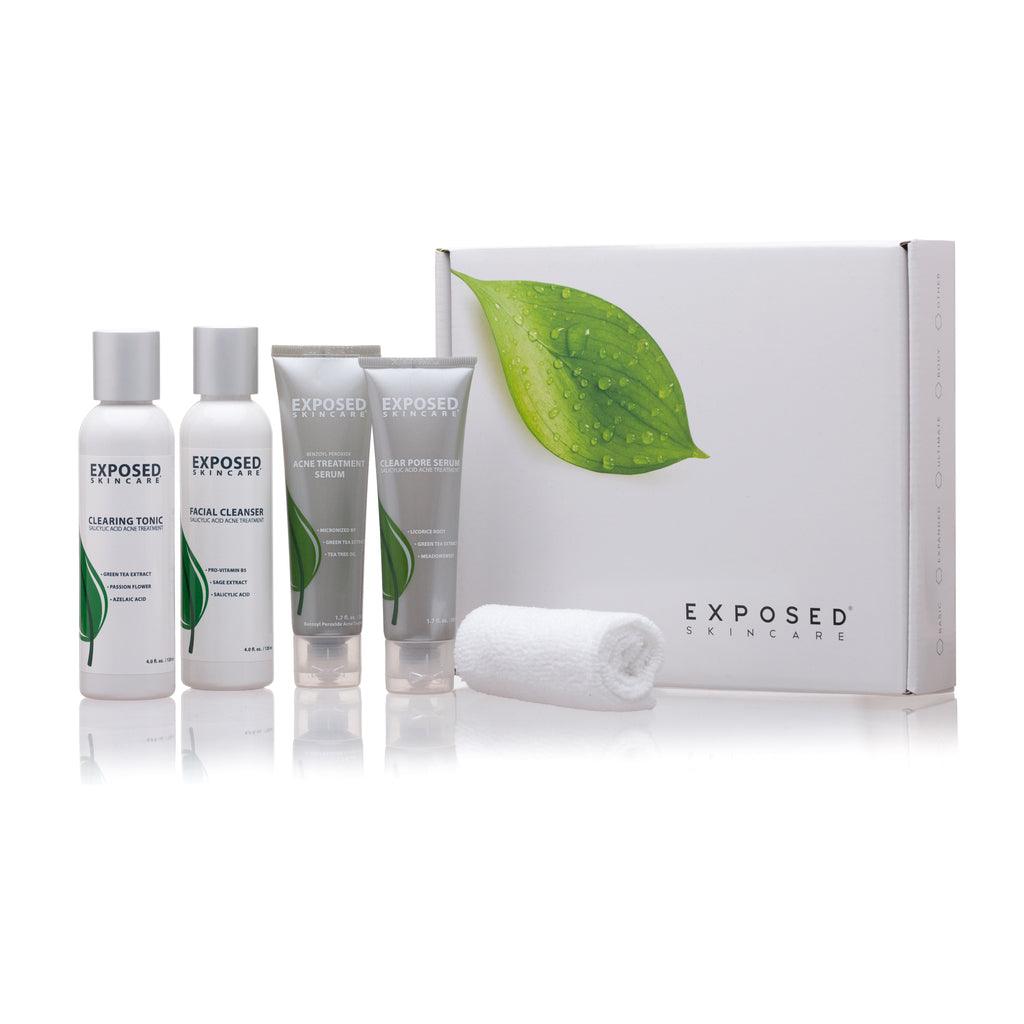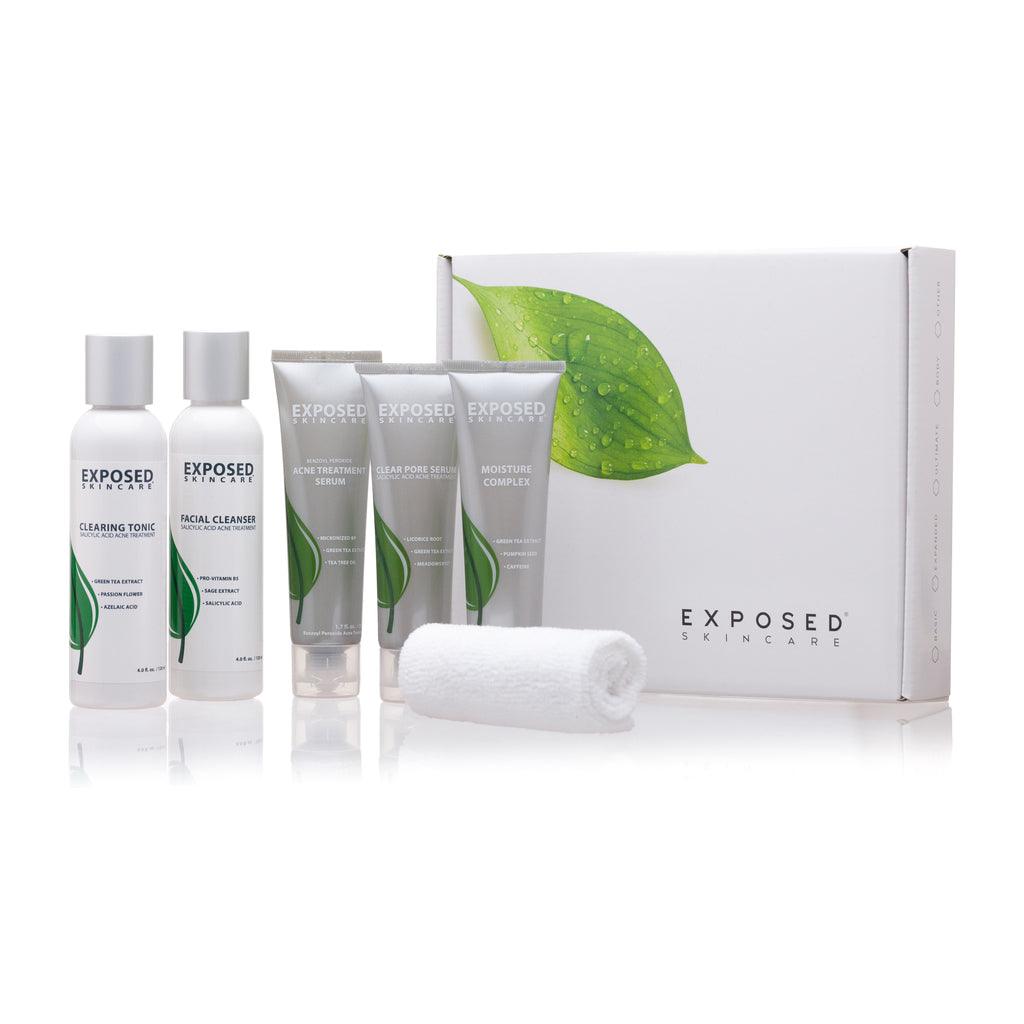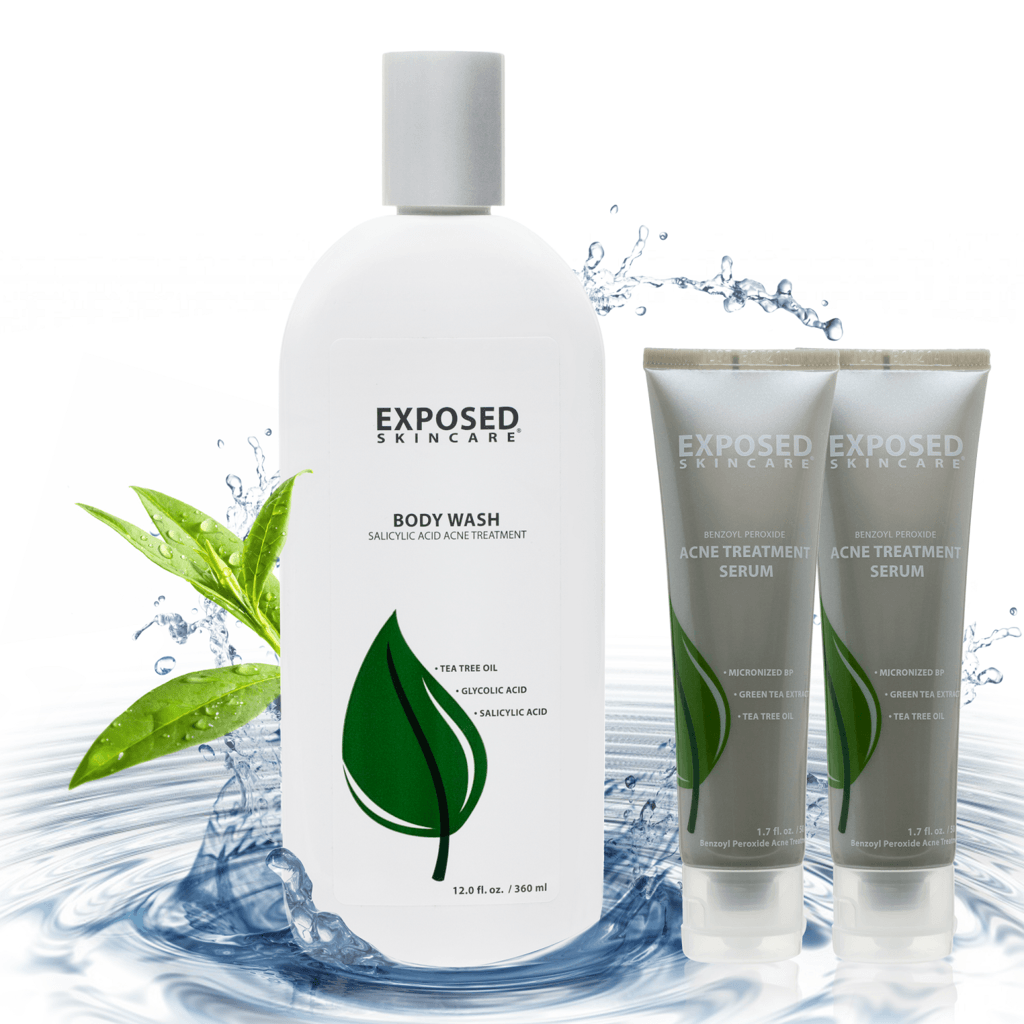Bacterial acne pops up all over when P. acnes bacteria invade clogged pores, while hormonal acne hits your jawline with deep, monthly cysts. You're probably dealing with both—most people are. Single-ingredient treatments fail because they only tackle one trigger. Exposed's system combines bacteria-fighters (benzoyl peroxide) with oil-balancers (green tea) to battle both fronts simultaneously. The proof is in their year-long money-back guarantee.
Biggest Takeaways
- Bacterial acne features surface-level blackheads across the face, while hormonal acne presents as deep cysts on the jawline and chin.
- Bacterial acne stems from P. acnes bacteria in clogged pores, whereas hormonal acne results from androgen-triggered excess oil production.
- Hormonal acne follows predictable patterns tied to menstrual cycles, while bacterial breakouts occur irregularly without timing correlation.
- Exposed's system combines salicylic acid and benzoyl peroxide to effectively target both bacterial and hormonal acne simultaneously.
- Green tea extracts in Exposed's formula balance oil production while soothing botanicals reduce inflammation from both acne types.
Understanding the Root Causes of Bacterial and Hormonal Acne

Millions of acne sufferers are playing a frustrating guessing game with their skin, not realizing they're fighting completely different battles.
When it comes to bacterial acne vs hormonal acne, knowing your enemy changes everything.
Bacterial acne stems from P. acnes bacteria partying in your clogged pores, often thanks to spotty cleansing habits and environmental gunk.
Meanwhile, hormonal acne is your body's response to hormone fluctuations—especially androgens—that crank up oil production and trigger breakouts during your period or stressful times.
Your diet isn't innocent either. Dairy and high-glycemic foods can fuel both types by triggering hormonal chaos and creating a bacterial playground.
The kicker? Treating just one cause is like bringing a knife to a gunfight—you'll always be outmatched by the factors you're ignoring.
Identifying Your Acne Type: Key Differences in Symptoms and Appearance
So you've figured out your acne isn't random—great first step.
Now let's pinpoint whether you're dealing with hormonal or bacterial acne, because treating the wrong type is like using sunscreen at night—pointless.
Here's how to tell them apart:
-
Location matters - Hormonal acne loves your jawline and chin, while bacterial acne crashes all over your face, back, and shoulders.
-
Timing tells all - Hormonal breakouts show up like clockwork with your period, bacterial ones pop up whenever they feel like it.
-
Size and depth - Hormonal acne delivers those deep, painful underground cysts; bacterial gives you surface-level blackheads and pustules.
-
Treatment response - If spot treatments barely touch your breakouts, you're probably dealing with hormonal acne.
How Bacterial Acne Develops and Spreads on the Skin

While you're blissfully going about your day, a microscopic drama unfolds on your face that eventually becomes those annoying red bumps we call bacterial acne.
Here's what's really happening: excess oil and dead skin cells clog your follicles, creating the perfect hideout for P. acnes bacteria to throw a wild party.
P. acnes microbes turn clogged pores into their personal nightclub, with your skin paying the cover charge.
Once these microscopic troublemakers settle in, inflammation follows like an unwanted plus-one, triggering those red, sometimes painful bumps we all dread.
Your habits can make things worse—constantly touching your face? That's basically giving bacteria a free Uber ride to new pores.
And those post-gym breakouts? Yeah, that's what happens when sweat and bacteria hang out too long.
The kicker? Hormonal changes can crank up oil production, giving bacteria even more fuel for their skin-disrupting shenanigans.
The Hormone Connection: Why Cyclical Breakouts Happen
If you've ever glanced at your calendar and thought, "Yep, right on cue—hello, breakouts," you're witnessing your hormones' special talent for wreaking havoc on your skin.
Those deep, painful cysts along your jawline aren't random—they're your body's response to the hormone rollercoaster happening inside.
Here's what's really going down with hormonal acne:
-
About 65% of adult women face cyclical flare-ups tied directly to their monthly cycle.
-
Androgens spark oil glands to go into overdrive, creating the perfect storm for clogged pores.
-
Those tender, angry bumps clustering on your lower face and chin? Dead giveaway it's hormonal.
-
Your skin actually follows predictable patterns during puberty, periods, pregnancy, and menopause.
Understanding these cycles isn't just interesting—it's your secret weapon for finally getting ahead of breakouts.
Why Single-Ingredient Treatments Fail Both Acne Types

The magic bullet myth continues to trick even the savviest skincare enthusiasts when it comes to acne treatment.
You've been there—that benzoyl peroxide spot treatment promising overnight miracles or the salicylic acid wash claiming to banish hormonal chin breakouts.
Here's the truth: your skin's rebellion has multiple conspirators. That single-ingredient approach? It's like bringing a knife to a gunfight.
Benzoyl alone might temporarily zap bacteria, but it can't touch the hormonal chaos causing your monthly eruptions. Meanwhile, oil-fighters do nothing against the bacterial party happening in your pores.
Your skin needs a multi-pronged attack. When treatments address just one acne driver—whether bacterial or hormonal—the other factors keep working behind the scenes, ensuring those stubborn breakouts will make an unwelcome comeback, usually at the worst possible time.
Exposed's 4-Step System: Targeting Both Bacterial and Hormonal Triggers
Unlike one-trick-pony products that leave you fighting half the battle, Exposed's 4-Step System hits acne where it hurts—tackling both bacterial and hormonal triggers simultaneously.
Whether you're dealing with those angry red bumps from bacteria or those stubborn chin breakouts tied to your hormones, this system's got your back.
Here's how Exposed delivers where others flop:
Stop settling for acne solutions that only solve half your problems—Exposed delivers complete care where competitors simply can't compete.
-
Pairs salicylic acid with benzoyl peroxide to unclog pores AND kill bacteria—no more choosing between the two.
-
Balances oil production with green tea extracts that won't strip your skin barrier.
-
Keeps inflammation in check with soothing botanicals like aloe and passion-flower.
-
Promotes consistent cell turnover to prevent both types of breakouts before they start.
No BS promises—just science-backed formulas that 1,000+ reviewers swear by.
Real Results: How Exposed Treats Both Acne Types Simultaneously
Scrolling through before-and-after photos can make you wonder if they're even real, but Exposed's dual-action approach delivers results that actually match the hype.
The science checks out—combining benzoyl peroxide to kill bacteria with salicylic acid to unclog pores tackles both acne types simultaneously, not separately like most brands force you to do.
What's invigorating is how Exposed doesn't make you choose between treating your hormonal chin breakouts OR your bacterial forehead situation. The system hits everything at once.
Users report seeing stubborn hormonal cysts shrinking while those annoying bacterial whiteheads disappear—usually within 3-4 weeks.
No miracle claims here, just consistent improvement backed by that ridiculous one-year guarantee (seriously, what skincare company does that?).
Your skin's worst enemies don't stand a chance.
Frequently Asked Questions
How Do I Tell if My Acne Is Hormonal or Bacterial?
Your hormonal acne appears as deep cysts on your jawline and chin during menstrual cycles, while bacterial acne shows as surface-level blackheads and pustules across your face and shoulders.
Does Accutane Work on Hormonal Acne?
Accutane can tame the hormonal acne beast effectively, but it's like using a sledgehammer for a nail. You'll find gentler solutions that target all four acne drivers simultaneously in Exposed's balanced system.
How Do You Treat Hormonal and Bacterial Acne?
You'll need to target all four acne drivers—excess oil, clogged pores, bacteria, and inflammation. Exposed's 4-step system handles both hormonal and bacterial acne simultaneously, unlike single-ingredient solutions that fail long-term.
Can You Have Fungal Acne and Hormonal Acne at the Same Time?
Yes, you can definitely have both fungal and hormonal acne simultaneously. They're caused by different factors—yeast overgrowth versus hormone fluctuations—and may require separate treatment approaches for complete clearance.
Putting It All Together
You're not doomed to play whack-a-mole with your skin forever. Whether bacteria's throwing a party in your pores or your hormones are staging a rebellion, Exposed's system tackles both troublemakers simultaneously. No more guessing games or medicine cabinet graveyards filled with half-used "miracle" products. The science is solid, the approach is thorough, and your clearer skin is waiting—no Instagram filter required.

